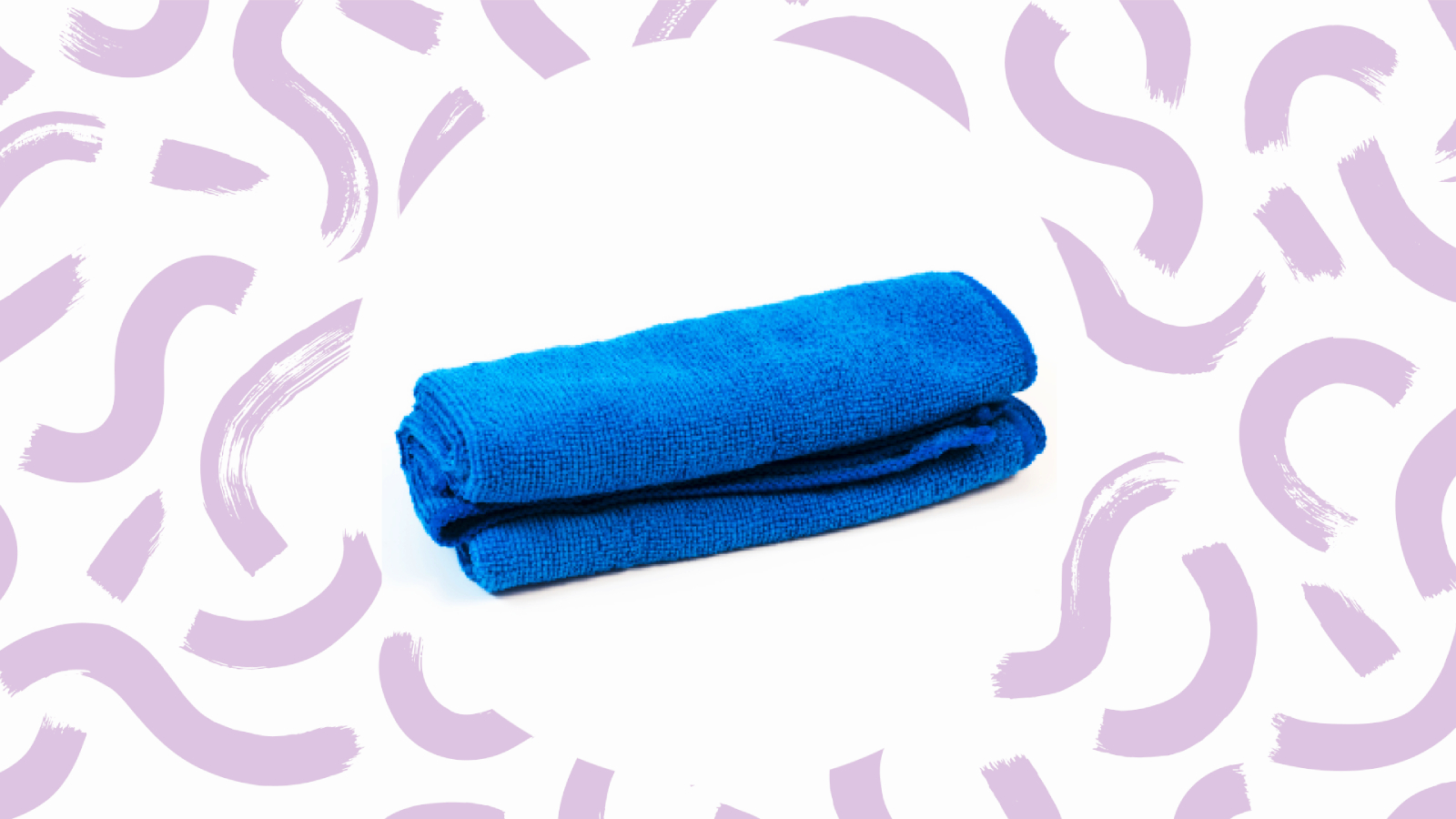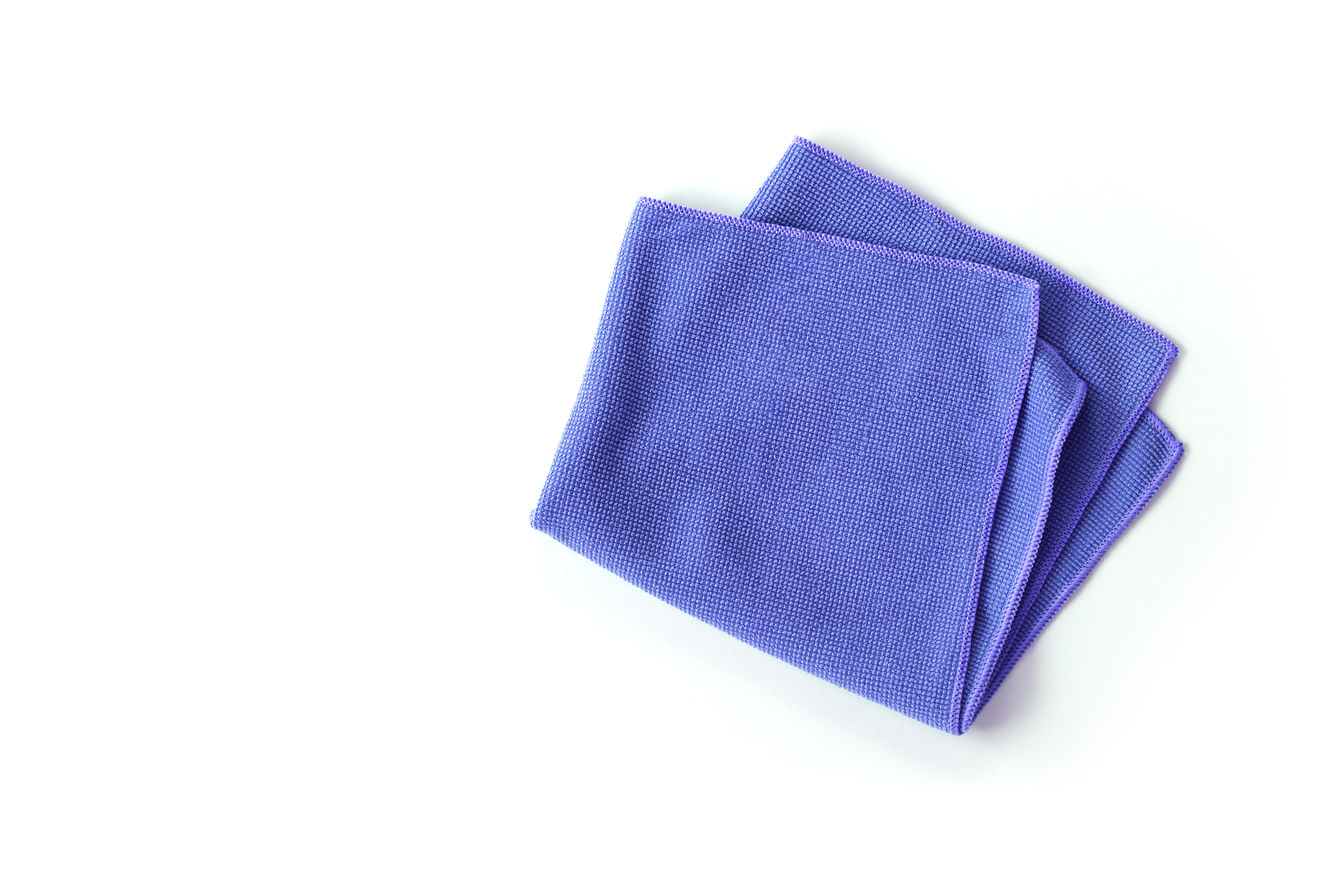How to clean a microfiber cloth to ensure it is properly sanitized
Find out how to clean a microfiber cloth properly to make it work better and last longer

Learn how to clean a microfiber cloth to keep it fresh and effective with these easy washing techniques. Microfiber cloths can be a dream for easier cleaning at home, but they work best when they've been properly washed.
A microfiber cloth is effective for many different types of cleaning, as it will work either dry or with water, and no chemicals are needed. A high-quality microfiber cloth can have more than three million fibers in each square inch. The millions of fibers include polyester fibers with a positive charge and nylon fibers with a negative charge. Together they attract and hold onto dirt, liquids, and bacteria on whatever is being cleaned.
Microfiber cloths are also reusable, so using one saves money and reduces the usage of paper towels and our impact on the environment. Microfiber cloths can be used for all sorts of cleaning tasks, from dusting and cleaning floors, to kitchen cleaning or cleaning glass or tiles—including when you're sussing out how to clean windows so they sparkle. But how's it best to keep them clean? This guide will show you how to clean a microfiber cloth effectively so you don't unwittingly spread dirt and germs around, and keep it in great condition.
How often should I clean a microfiber cloth?
Microfiber cloths do a lot of work, so it's important to rinse them out after each use. However, it's wise to sanitize your cloth every week if you use them frequently, and after every deep clean you've used them for. While sanitizing isn't the same as disinfecting, it does reduce the bacteria level in the microfiber cloth more than a quick rinse.
Three easy ways clean your microfiber cloth
Here are three methods for properly sanitizing your microfiber cloths—remember proper care will help extend their lifespan. Much like learning how to clean an iron, and how to clean a dishwasher, keeping appliances and tools you use regularly in your cleaning routine will help to keep your house hygienic.
1. Soak and rinse the microfiber cloth after every use
Sometimes all you need is a simple rinse to keep your microfiber cloth in good condition.
Directions:
Sign up to our free daily email for the latest royal and entertainment news, interesting opinion, expert advice on styling and beauty trends, and no-nonsense guides to the health and wellness questions you want answered.
- After you've used the microfiber cloth, shake off any loose dirt either outside or over a trash can.
- Check the care label for instructions. It will likely suggest that you rinse the cloth out using either warm or hot water.
- Fill the sink with the appropriate temperature water.
- Rub the cloth in the water with your hands, and then let it soak for 15 to 20 minutes.
- Swish the cloth again before rinsing it under the faucet.
- Keep rinsing until the rinsing water is clear, and then wring out the cloth.
- Hang it to dry.
2. Machine wash and dry weekly

Weekly, it's best to give your microfibre cloth a proper clean in the laundry, especially if your microfiber cloth gets frequent use. Toss it in the laundry each week after shaking and rinsing most of the loose dirt out.
Some tips for washing your microfiber cloth in the washing machine:
- Don't use bleach, fabric softener, harsh soaps, or fragrances on the microfiber cloth—these can damage or coat the fibers in the microfiber cloth.
- Instead, use a little bit of gentle detergent and run a delicate cycle. If the cloth is a little malodorous, white vinegar can be added to the washing machine.
- If you have enough microfiber cloths to have their own load, that is best. Washing them with other fabrics can be hard on the fibers and leave lint on the microfiber cloth, especially if the microfiber cloths are washed with cotton towels or clothes.
- Cloths that are used less frequently can simply be added to the laundry when they seem dirty, or when they are not performing as well as usual.
- Of course, make sure you keep your washing machine clean too, so it can do a good job.
- Check the care label on the microfiber cloth to see what is recommended for drying. You may be able to put it in the dryer, but some types of microfiber cloths, such as dusters for floors and walls, require special treatment.
- Microfiber cloths dry quickly if hung up. If you put them in the dryer, use low heat or no heat, and don't add dryer sheets or balls.
3. Boil the cloth for a deep clean
Microfiber cloths that are a bit smelly or aren't working as well as they usually do can be boiled on the stove in water with a quarter cup of baking soda for 10 to 15 minutes. Check out our guides on how to get stains out of carpet and how to clean grout for more advice on how to use baking soda within your kitchen and bathroom cleaning routines.
Making your microfiber cloths last

Top-quality microfiber cloths can be a good investment. Cleaning and sanitizing them properly will help extend their life and keep them working well in your home. In addition to proper cleaning, other decisions help prolong the life of your microfiber cloths.
A few tips are:
- These cleaning cloths should be stored together so they don't attract lint from other fabrics.
- Use only water with the microfiber cloths, since they don't do as well with chemicals.
- Don't iron them, since they could melt.
What's the best way to use a microfiber cloth?
The cloth should be dry for dusting, but it can be damp for other cleaning purposes.
For most efficient use when cleaning with a microfiber cloth, fold the cloth several times so you have a clean section each time you refold, switching to a clean section of the cloth every few minutes, or sooner if the cloth stops picking up dirt as well as before.
Amy Hunt is an experienced digital journalist specialising in homes, interiors and hobbies. She began her career working as the features assistant at woman&home magazine, before moving over to the digital side of the brand where she eventually became the Lifestyle Editor up until January 2022. Amy won the Digital Journalist of the Year award at the AOP Awards in 2019 for her work on womanandhome.com.

